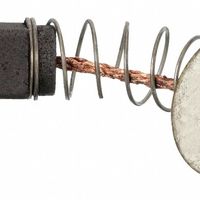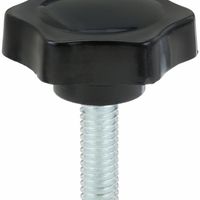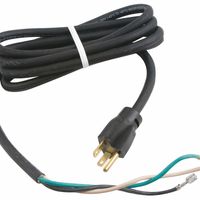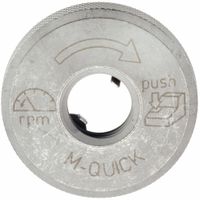Call +(254) 703 030 000 / 751 483 999 / 721 704 777
- Home
- Tools
- Power Tools
- Power Tool Replacement Parts
.....Read More
Frequently Asked Questions
Where can I find replacement parts for my power tool?
You can find replacement parts for your power tool through several avenues:
1. **Manufacturer's Website**: Visit the official website of the power tool's manufacturer. They often have a dedicated section for spare parts and accessories. You can search by model number or part number to find the exact replacement you need.
2. **Authorized Dealers**: Contact authorized dealers or service centers for the brand of your power tool. They can order parts directly from the manufacturer and may also offer installation services.
3. **Online Retailers**: Websites like Amazon, eBay, and specialized tool parts retailers such as Tool Parts Direct or eReplacementParts.com offer a wide range of replacement parts. Ensure you have the correct model and part numbers to find the right match.
4. **Local Hardware Stores**: Some local hardware or home improvement stores carry replacement parts for popular power tool brands. Stores like Home Depot or Lowe’s may have what you need or can order it for you.
5. **Specialty Repair Shops**: Look for local repair shops that specialize in power tools. They often have a stock of common replacement parts or can source them for you.
6. **Online Forums and Communities**: Join online forums or communities related to power tools. Members often share resources and may direct you to where they have successfully sourced parts.
7. **Second-Hand Marketplaces**: Check platforms like Craigslist or Facebook Marketplace for used tools being sold for parts. This can be a cost-effective option if you need multiple components.
8. **Direct Contact**: If you’re unable to find parts through the above methods, contact the manufacturer directly via phone or email for assistance in locating or ordering parts.
Always ensure compatibility by verifying the part numbers and tool model numbers before purchasing.
How do I know which replacement part is compatible with my power tool model?
To determine which replacement part is compatible with your power tool model, follow these steps:
1. **Identify the Model Number**: Locate the model number of your power tool. This is usually found on a label or nameplate on the tool itself, often near the motor housing or handle.
2. **Consult the User Manual**: Refer to the user manual that came with your power tool. It typically includes a parts list and diagrams that specify compatible replacement parts.
3. **Manufacturer’s Website**: Visit the official website of the power tool manufacturer. They often have a support or parts section where you can enter your model number to find compatible parts.
4. **Authorized Dealers and Service Centers**: Contact authorized dealers or service centers for your power tool brand. They can provide information on compatible parts and may offer direct purchasing options.
5. **Online Parts Retailers**: Use online parts retailers that specialize in power tool components. Enter your model number to search for compatible parts. Websites like eReplacementParts or PartShopDirect can be useful.
6. **Cross-Reference Part Numbers**: If you have the part number of the component you need to replace, cross-reference it with the part numbers listed for your model on the manufacturer’s website or in the user manual.
7. **Customer Support**: Reach out to the manufacturer’s customer support for assistance. They can confirm compatibility and may provide additional guidance.
8. **Forums and Communities**: Engage with online forums or communities dedicated to power tools. Experienced users can offer advice on compatible parts based on their own experiences.
9. **Visual Inspection**: If possible, compare the replacement part visually with the original to ensure it matches in size, shape, and connection points.
By following these steps, you can confidently identify and purchase the correct replacement part for your power tool model.
What are the steps to replace a worn or broken component in my power tool?
1. **Identify the Problem**: Determine which component is worn or broken. Listen for unusual noises, check for reduced performance, or inspect for visible damage.
2. **Consult the Manual**: Refer to the power tool’s user manual for guidance on the specific component and any manufacturer recommendations for replacement.
3. **Gather Tools and Materials**: Collect necessary tools such as screwdrivers, pliers, or wrenches. Obtain the replacement part, ensuring it matches the model and specifications of your power tool.
4. **Safety First**: Unplug the power tool or remove the battery to prevent accidental operation. Wear safety gear like gloves and goggles to protect against injury.
5. **Disassemble the Tool**: Carefully remove screws or fasteners to access the internal components. Keep track of all parts and their placement for reassembly.
6. **Remove the Faulty Component**: Detach the worn or broken part. This may involve unscrewing, unclipping, or disconnecting wires. Be gentle to avoid damaging surrounding parts.
7. **Install the New Component**: Position the replacement part in the correct location. Secure it with screws, clips, or connectors as needed. Ensure it is firmly in place and aligned properly.
8. **Reassemble the Tool**: Reattach all parts and fasteners in the reverse order of disassembly. Double-check that everything is secure and correctly positioned.
9. **Test the Tool**: Plug in or reinsert the battery and test the tool to ensure it operates correctly. Listen for unusual sounds and check for proper functionality.
10. **Final Inspection**: Conduct a thorough inspection to confirm all components are secure and the tool is safe to use. Make any necessary adjustments.
11. **Maintenance**: Regularly maintain your power tool to prevent future issues, including cleaning, lubrication, and timely replacement of worn parts.
How can I identify if a power tool part needs replacement?
1. **Visual Inspection**: Look for visible signs of wear and tear, such as cracks, rust, or deformation. Check for any missing or damaged components.
2. **Performance Issues**: Notice if the tool is not performing as efficiently as before. This includes reduced power, unusual noises, or vibrations during operation.
3. **Overheating**: If the tool becomes excessively hot during use, it may indicate a failing part that needs replacement.
4. **Frequent Malfunctions**: Consistent issues like stalling, jamming, or failure to start can signal a faulty component.
5. **Unusual Smells**: Burning or chemical odors can indicate electrical issues or worn-out parts.
6. **Loose or Stiff Parts**: Check for any parts that are unusually loose or difficult to move, which may suggest wear or damage.
7. **Age and Usage**: Consider the age of the tool and how frequently it is used. Older tools or those used heavily may have parts that naturally wear out over time.
8. **Manufacturer’s Guidelines**: Refer to the tool’s manual for recommended maintenance schedules and part replacement intervals.
9. **Professional Assessment**: If unsure, consult a professional for a thorough inspection and diagnosis.
10. **Error Codes**: For electronic tools, check for any error codes or warning lights that indicate specific issues.
11. **Battery Life**: For cordless tools, a significant drop in battery life can suggest the need for a new battery or charger.
12. **Test with Known Good Parts**: If possible, swap the suspected part with a known good one to see if performance improves.
13. **Consult Online Resources**: Look for forums, reviews, or videos related to your specific tool model for common issues and solutions.
Are aftermarket replacement parts as reliable as original manufacturer parts?
Aftermarket replacement parts can vary in reliability compared to original manufacturer parts (OEM parts). The reliability of aftermarket parts depends on several factors, including the manufacturer, the type of part, and the specific application.
1. **Quality and Standards**: Some aftermarket parts are produced by reputable companies that adhere to high-quality standards, making them as reliable as OEM parts. These companies often invest in research and development to ensure their products meet or exceed OEM specifications. However, other aftermarket parts may be produced by manufacturers with less stringent quality controls, leading to variability in reliability.
2. **Cost and Materials**: Aftermarket parts are often less expensive than OEM parts, which can be both an advantage and a disadvantage. Lower costs may result from the use of cheaper materials or manufacturing processes, potentially affecting durability and performance. Conversely, some aftermarket parts offer improved materials or designs that enhance reliability.
3. **Warranty and Support**: OEM parts typically come with a warranty and the backing of the vehicle manufacturer, providing assurance of quality and support. Some aftermarket parts also offer warranties, but the terms and coverage can vary widely. It's important to consider the warranty and support when evaluating the reliability of aftermarket parts.
4. **Compatibility and Fit**: OEM parts are designed specifically for a particular make and model, ensuring a perfect fit and optimal performance. Aftermarket parts may not always match the exact specifications, which can affect reliability if the part does not fit or function as intended.
5. **Application and Usage**: For some applications, such as performance upgrades, aftermarket parts may offer superior reliability and performance compared to OEM parts. However, for critical components, OEM parts may be preferred for their guaranteed compatibility and reliability.
In summary, while some aftermarket parts can be as reliable as OEM parts, it is crucial to research and choose reputable brands and consider the specific application and requirements.
How do I ensure the replacement part will restore full functionality to my power tool?
To ensure the replacement part will restore full functionality to your power tool, follow these steps:
1. **Identify the Problem**: Diagnose the issue accurately to confirm that the part you intend to replace is indeed the cause of the malfunction.
2. **Consult the Manual**: Refer to the power tool's user manual for part specifications and compatibility. This ensures you select the correct replacement part.
3. **Use OEM Parts**: Opt for Original Equipment Manufacturer (OEM) parts, as they are designed specifically for your tool model, ensuring compatibility and performance.
4. **Verify Part Number**: Cross-check the part number with the manufacturer’s specifications to ensure it matches the required component.
5. **Purchase from Reputable Sources**: Buy replacement parts from authorized dealers or reputable suppliers to avoid counterfeit or substandard components.
6. **Inspect the Replacement Part**: Upon receipt, examine the part for any visible defects or damage that could affect functionality.
7. **Follow Installation Instructions**: Adhere to the installation guidelines provided in the manual or by the manufacturer to ensure proper fitting and operation.
8. **Test the Tool**: After installation, test the power tool to confirm that it operates as expected. Check for any unusual noises, vibrations, or performance issues.
9. **Seek Professional Help**: If unsure about the installation process or if the tool does not function correctly after replacement, consult a professional technician.
10. **Warranty and Return Policy**: Ensure the replacement part comes with a warranty or return policy in case it does not resolve the issue or is defective.
By following these steps, you can increase the likelihood that the replacement part will restore your power tool to full functionality.
Can I replace power tool parts myself, or should I hire a professional?
You can replace power tool parts yourself if you have the necessary skills, tools, and understanding of the specific power tool. Many power tools come with user manuals that provide detailed instructions on replacing parts, which can be helpful for DIY enthusiasts. If the part replacement is straightforward, such as changing a blade, battery, or a simple component, and you feel confident in your abilities, you can likely handle it yourself.
However, for more complex repairs, such as those involving electrical components, motor parts, or intricate mechanisms, it might be safer and more efficient to hire a professional. Professionals have the expertise and experience to ensure the repair is done correctly and safely, reducing the risk of further damage or injury. Additionally, if your power tool is still under warranty, attempting a DIY repair might void the warranty, so it's advisable to check the warranty terms before proceeding.
Consider the cost and availability of replacement parts, as well as the potential need for specialized tools. If the parts are expensive or hard to find, or if the repair requires tools you don't have, hiring a professional might be more cost-effective in the long run.
Ultimately, the decision depends on your comfort level, the complexity of the repair, and the value of the tool. If in doubt, consulting with a professional can provide peace of mind and ensure the tool is repaired correctly.




